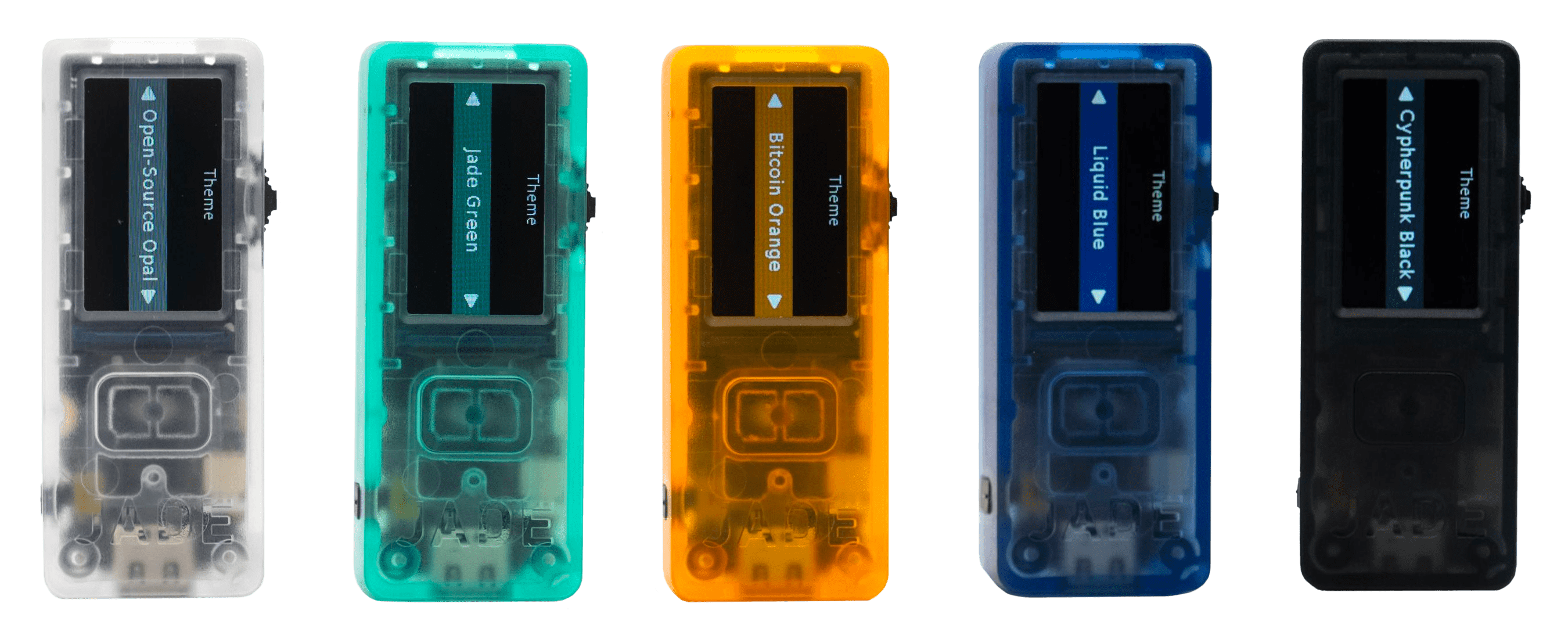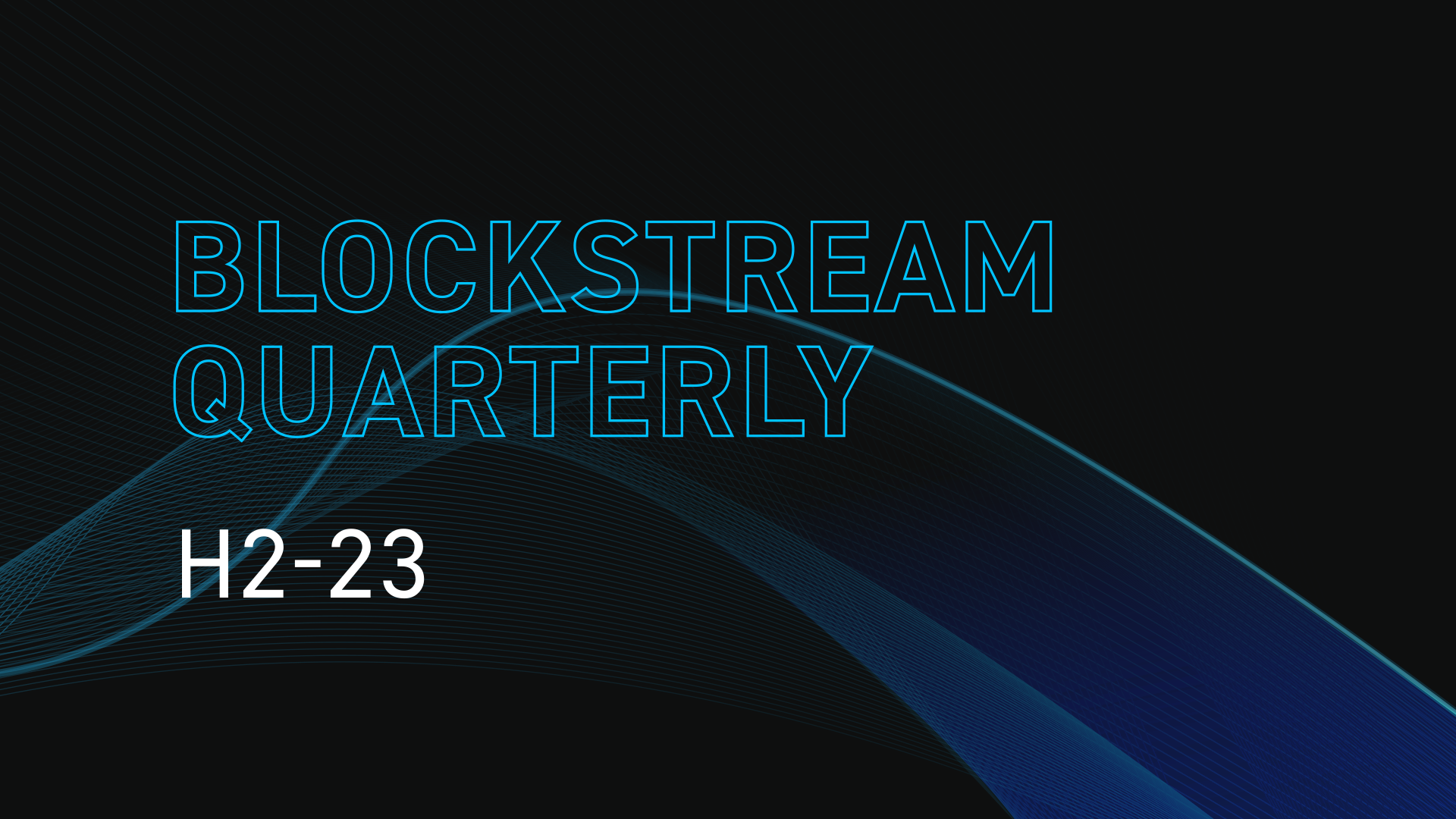As Bitcoin celebrates its 15th birthday, we reflect on the progress made in its development and our contributions to the world's greatest open-source project over the past year.
The first half of the year witnessed numerous developments, from the formal establishment of Blockstream Research, our applied research team, to the overhaul of the Blockstream Green mobile app experience. We also scaled up distribution of the Blockstream Jade hardware wallet to meet global demand. The Core Lightning team launched Greenlight, a new Lightning-as-a-Service, and played a key role in integrating splicing into the official Lightning Specification. Finally, we met a long-standing goal of making the code for Liquid's functionaries open source, enabling anyone to audit the code and create their own Liquid-like network.
We are grateful to all of you who have remained supportive of Bitcoin’s long-term vision and the promise of a brighter future. Thank you for engaging with our content, contributing to the open-source projects we maintain, and always challenging us to make better Bitcoin products.
In this special quarterly update, we look back on the second half of 2023, highlighting some of the updates to our portfolio of Bitcoin infrastructure products and progress made on the precipice of Bitcoin research and development.
Advancing Bitcoin Privacy and Security
Blockstream Research, the research arm of Blockstream and a leader in the Bitcoin development space since our founding in 2014, continued to expand its body of work with several new milestones in the latter half of 2023.
Key among these was our push to advance Bulletproofs++ (BP++), a type of zero-knowledge proof that would allow amounts to be blinded (with types of assets additionally blinded in Liquid) for greater privacy. We merged the first of two PRs into libsecp256k1-zkp, which will lay the groundwork for implementing BP++ in Liquid and potentially Bitcoin in the future. For more information, readers can refer to the whitepaper "Bulletproofs++: Next Generation Confidential Transactions via Reciprocal Set Membership Arguments" available freely on the IACR eprint archive and follow our progress on developing a working implementation on GitHub.
We also revealed a new Shamir's Secret Sharing scheme for managing data and Bitcoin secrets without the use of electronics, called Codex32. The scheme uses volvelles, a type of paper computer, to give users high tangible assurance over their secrets they wish to conceal. Codex32 seed encoding recently received a formal BIP number (BIP 93), adding support for seed generation, splitting, reconstruction, checksumming, and other applications for Bitcoin secrets—all possible with only pen and paper. Today, the Codex32 protocol has been integrated into the Bails wallet, with Liana, as well as the Blockstream Green and Jade wallets to follow suit at a later date.
In collaboration with cryptographer Yannick Seurin, Blockstream engineers Andrew Poelstra, Jonas Nick, and Tim Ruffing (and former Blockstreamers Gregory Maxwell and Pieter Wuille) have been long-time contributors to the open-source MuSig multisignature scheme since its conception in 2018. Since then, MuSig has developed further and has several variants, the most recent being MuSig2.
MuSig2 improves upon the original MuSig design (MuSig1), reducing communication rounds from three to two and enabling non-interactive signing. It brings the benefits of increased privacy and lower transaction costs by allowing a group to collectively generate a single signature and public key.
There are now four BIPs that establish the framework for MuSig2 in Bitcoin wallets: MuSig2, derivation, PSBTs, and descriptors. These BIPs standardize how nonces, public keys, and partial signatures are incorporated into Partially Signed Bitcoin Transactions (PSBTs) and detail the methods for defining transaction outputs under MuSig2's control. This move towards formalizing MuSig2 paves the way for its integration into the broader Bitcoin wallet ecosystem, optimizing multisig transactions in terms of efficiency and cost.
Now that the BIPs have been established, their ultimate approval after nearly six years in development, is in the hands of the Bitcoin community. We are eager to engage in public discussions, lend our expertise in any necessary revisions, and let the formal BIP review process take place. If you would like to discuss MuSig2 or other research endeavors by our team, please reach out through email.
Giving Jade a Makeover
Blockstream Jade, our popular Bitcoin and Liquid hardware wallet, is reproducible and open-source across all facets of its security model, including hardware, software, and supporting infrastructure (i.e., the blind oracle). This is advantageous for security and quality assurance, as users and the wider community can thoroughly audit the firmware and design-build themselves and flag the repository for any vulnerabilities.
Thanks to this growing community of contributors and the valuable user feedback we receive across our socials, we were able to optimize performance and further refine Jade's user interface and experience in the 1.0.21 update. We added better navigation and readability with more intuitive SeedQR scanning flows. We embedded direct links to our Help Center in the Jade menu settings, helping to assist users in the initial onboarding process and with self-custody questions.

A few months later, we shipped five new Jade colors in transparent: black, blue, orange, green, and white. These and the revamped Jade UX gave users a refreshed, more user-friendly, self-custody experience, with many users commenting on how it felt like an all-new hardware wallet.
Leading companies in the industry took notice, culminating in a partnership with Swan related to their new collaborative custody solution—Swan Vault. Swan selected Jade as its primary hardware offering, which comes bundled with advanced custody features like reliable key backup options, collaborative vault systems, and multi-party spending permissions.
Another noteworthy integration was SideSwap, a popular non-custodial wallet and swap market for Liquid assets. The SideSwap update allows users to place trustless limit and market orders directly from their Jade. This means users are able to atomically swap Liquid Bitcoin (LBTC) for Liquid Tether (LUSDt) and other Liquid assets, such as tokenized securities like the BMN, while keeping their keys offline using their Jade hardware wallet—saving on fees and assuring full custody through the entire swap process.
Heading into 2024, the team is ambitious about expanding the Jade affiliate program for improved EU distribution and remaining consistent with the rollout of new UX updates and software features. In the near term, users can look forward to improved QR workflows along with air-gapped Jade support in Blockstream Green, as well as the integration of Jade's Miniscript features into popular platforms.
Launching a Second Bitcoin Mining Investment Product
Blockstream Finance, our financial division focused on bringing Bitcoin-related investment vehicles to market, launched a new mining product—the Blockstream ASIC (BASIC) Note. The BASIC Note follows the success of the Blockstream Mining Note, another Bitcoin mining investment product, which offers tokenized Bitcoin hashrate and a bitcoin payout at the end of its term.
The BASIC Note, however, is a fund vehicle that seeks to generate a bitcoin-on-bitcoin return for investors from the potential upside of ASIC (Application-Specific Integrated Circuits) miner prices, which have historically been closely correlated to bitcoin price movements.
In December, we successfully closed the first BASIC series (BSIC1) with nearly $4.9M allocated to acquire new, unused Antminer S19k Pro ASIC miners through our partner SunnySide Digital. Since the miners have been purchased, there has been a 5.21% upswing in ASIC quotes when denominated in BTC and an 18.52% increase in USD.
Investors can review more fund performance metrics on STOKR's BASIC dashboard here.

The second series (BSIC2) will go on sale to qualified non-US investors in the coming weeks on STOKR. It offers another attractive entry point into the undervalued ASIC miner market, with the BTC-to-ASIC price ratio remaining similar to that of BSIC1.
As we move closer to the 2024 halving, we anticipate large mining operators to bring new capacity online and upgrade their existing fleets, in order to stay competitive. This shift is likely to lead to a reduction in the current surplus of miners in the market and result in new ASIC price highs, as older equipment becomes obsolete and is replaced by newer, more efficient models.
Connecting with Blockstream
If you or your organization are interested in exploring opportunities for collaboration with Blockstream or considering the integration of one of our technologies into your operations, we encourage you to connect with our team through one of the product pages on the main Blockstream site.
For further updates, you can follow us on X @Blockstream, and join the conversation in our Finance, Green, Jade, Lightning, Liquid, and Satellite Telegram channels and the Build On L2 community platform.
